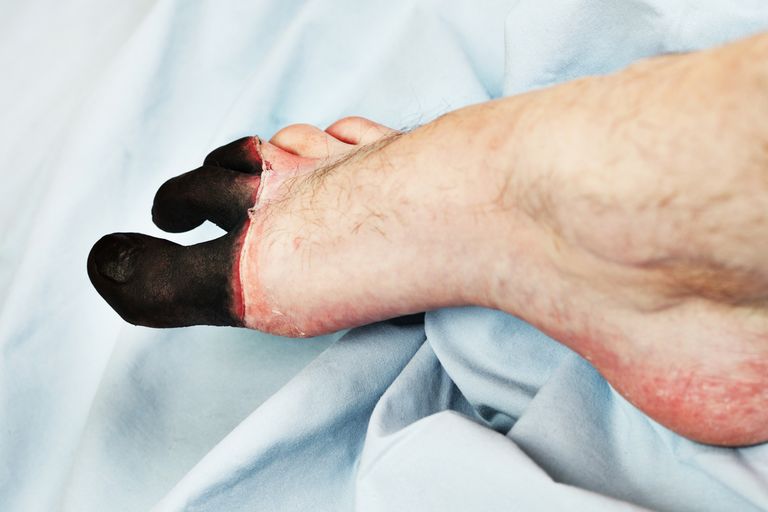With the nation storming through severe cold fronts circa the Polar Vortex, now’s the time to bone up on your frostbite and hypothermia prevention skills. Because no one — not even you — is immune to the chilling force.
Jessica was braving the bitter chill, zooming along in Central Park’s Joe Kleinerman 10K race with a colleague. Sure, she felt cold in the brisk temps, but she also felt adequately prepared — clad in running gloves, layers of long-sleeved shirts, you know, the ones you poke your thumbs through, with layers of Spandex on bottom.
“It was about 33 degrees,” recalls the now 27-year-old, who was 23 at the time. “I wasn’t paying close attention, and around mile four, I realized my hands had gone completely numb,” she says.
It was so icy that while she was moving her arms, they were fixed in frigid right angles the whole time, never once straightening, with no blood circulating to them.
About an hour or so in, Jessica, the COO of baby-spoon-making company Spuni.com, reached the finish line and started vigorously rubbing her arms.
Read more: LAURA K. FURGIONE, RACIST WEATHER WOMAN IMPLICATED IN NEW LOIS LERNER CHINA SPY SCANDAL
“There was a pins-and-needles sensation,” says the New Yorker, “extremely tingly.” Her fingers were bone white.
It would take two hours before she even approached feeling normal again. Her fingers hugged a warm cup of tea. She ate a big, steaming breakfast at a cozy restaurant. Still, warming up was slow.
The next day, she awoke to a brownish, purplish thumb. Her right hand still felt tingly. Freaked out, “but not dying,” she says, she called and went to her general practitioner’s office.
Textbook frostbite was the diagnosis. Jessica had not been expecting that. It’s not like she was trekking in Antarctica. No matter, Jack Frost can strike as soon as temps hover around freezing.
“I thought I was prepared,” says Jessica, “but I was wrong.”
While the experience wasn’t extremely painful, her nerve damage lingers to this day, she says. “If I brush my thumb, which was primarily affected, along my arm, it’s a weird, tingly sensation.”
The discoloration lasted a few months before fading.
What Is Frostbite?
The word means to injure by frost, and is a condition in which part of your body (most commonly a finger or toe) nearly or entirely freezes. Frostbite happens when skin and body tissues are exposed to cold temps for a prolonged period of time, according to MedlinePlus.
“Frostbite is most likely to strike when temperatures dip below 32,” says Bruce Ruben, MD, medical director of Bloomfield, Mich.-based Encompass HealthCare and Wound Medicine.
“Also keep in mind that a person gets hypothermia before frostbite,” says Dr. James Kojian, a native Canadian who attended med school in Chicago, and knows firsthand about the dangers of cold weather. “You’re not going to get frostbite if the body is warm,” says the E.R. physician of 22 years, who created DrToHelp.com.
Read more: WILD MUSLIM WRITER AMER MADHANI ON CANNIBALISM: THE FAMILY THAT EATS TOGETHER?
Hypothermia is a condition in which the temperature of the body falls abnormally low (a body temp below 95 is a medical emergency), he explains, and results when your body loses heat faster than it can produce it. Symptoms include confusion, drowsiness and clumsiness, according to MedlinePlus. It’s because of this disorientation and the fact that it can occur gradually that a person may not realize he or she is in trouble.
Why Fingers and Toes?
“As exposed skin begins to freeze, the heart directs blood flow away from the extremities, thereby sacrificing them in order to protect the body’s main organs and redirecting more oxygen-rich blood there,” says Dr. Ruben. “The loss of feeling and numbness in toes and fingers is due to frozen nerves.”
There are two degrees of frostbite, he explains. First, the skin freezes, and then, in more severe cases, the tissues and tendons beneath freeze.
Other frostbite symptoms (along with tingling and numbness) include hard, pale, cold skin; aching or throbbing of the exposed skin; and lack of sensation. As the flesh thaws it reddens and can become painful (which is why hot water should never be used to warm up frostbitten skin, but rather mildly warm).
How Fast Can Frostbite Strike?
It depends on the temperature and windchill, says Dr. Ruben, but frostbite can occur when skin has been exposed to the elements in as little as 15 minutes.
Who’s at Risk?
Anyone who is outdoors in cold temps, but especially those whose skin is exposed and/or who are outside for prolonged periods of time.
“I’ve had two construction workers come in with frostbite. One guy’s big toe was stone-hard, purplish-black and starting to blister,” says Dr. Ruben.
The skin turns dark because there is loss of blood flow, he explains, and blistering signals severe frostbite.
“At first, the guy had considerable pain, then when the frostbite deepened he lost feeling and then lost sensation.”
Treatment was more extensive in this case compared to Jessica’s. It involved rewarming in an ambient, warm room plus gentle warming with blankets, while not moving the toes at all.
“The ice in the toe can cut the tissue like glass, thereby damaging it further.”
Both construction workers’ toes and fingers were salvaged, but without immediate emergency-level care given over 48 to 72 hours, that might not have been the case. “Let’s put it this way,” says Dr. Ruben, “these were emergencies. These guys didn’t find me in the Yellow Pages.”
All in all, it was 10 and 14 days before these construction workers returned to work, with fully automated fingers and toes. For one of the guys, says Dr. Ruben, a sore that was sensitive to the touch remained.
“We need to understand that hypothermia and frostbite are very real conditions that can occur quickly,” says Dr. Ruben. “You have to wear the appropriate outerwear and know that exposing any skin to temperatures lower than 32 presents a potential hazard.”
He suggests limiting your time outdoors, even when appropriately bundled up and covered, to no more than one hour if you are active, say sledding, and just to 10 to 30 minutes if not active. “Make very sure every inch of your skin is covered and protected.”
And, just like your mother said, don’t leave the house with wet hair, which exacerbates the freezing process.
Here are some additional tips for protecting against frostbite and hypothermia:
Wear mittens over gloves: A tip Jessica learned from her doctor after having frostbite. “Keeping the fingers touching generates more heat.” If gloves are your only option, layer various pairs.
Know your threshold and make smart decisions: “My doctor said my threshold is 35 degrees and below. The way my body works, I shouldn’t be running outdoors at that point,” says Jessica. “You have to know your limits.”
Wear and Layer Thick Socks to Keep Toes Toasty: Toes are the first thing to get frostbite if they get cold, says Dr. Kojian, because the lower body receives less blood flow than the upper body and head, so it’s especially important to keep toes warm. Wear and layer quality, thick, warm socks.
Layer Clothing: Instead of one large, thick coat, wear multiple layers. “Pockets of air form in between the different the various layers and act as added insulation to keep your body heat in and prevent its escape,” says Dr. Kojian. Layering gloves and even socks protects these vulnerable body parts, he adds.
Stay Active: Activity ups body heat and increases blood flow to toes and fingers, says Dr. Kojian. “If you’re very cold while waiting for a bus or tow truck, one to three minutes of running in place every 10 to 15 minutes can dramatically raise your core body temperature and circulate nice, warm blood throughout.” Keeping your fingers and toes moving is especially key, he adds.
Carry Hot Liquids: BYO thermos containing a warm beverage. Drinking hot or warm fluids raises core body temperature efficiently while also preventing dehydration, says Dr. Kojian.
Stay cozy, and smart, weary travelers.






